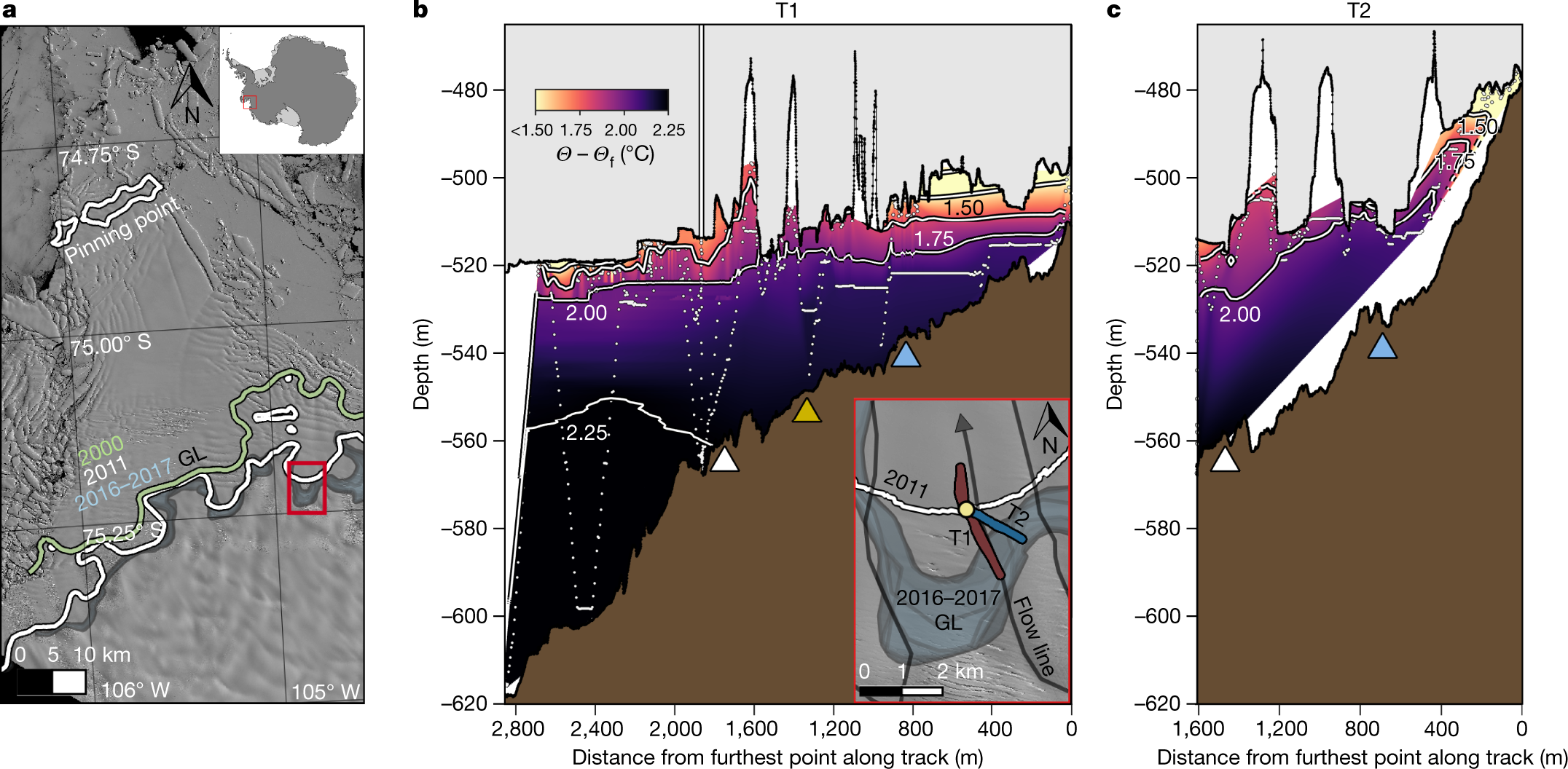
Heterogeneous melting near the Thwaites Glacier grounding line
Thwaites Glacier represents 15% of the ice discharge from the West Antarctic Ice Sheet and influences a wider catchment1–3. Because it is grounded below sea level4,5, Thwaites Glacier is thought to be susceptible to runaway retreat triggered at the grounding line (GL) at which the glacier reaches the ocean6,7. Recent ice-flow acceleration2,8 and retreat of the ice front8–10 and GL11,12 indicate that ice loss will continue. The relative impacts of mechanisms underlying recent retreat are however uncertain. Here we show sustained GL retreat from at least 2011 to 2020 and resolve mechanisms of ice-shelf melt at the submetre scale. Our conclusions are based on observations of the Thwaites Eastern Ice Shelf (TEIS) from an underwater vehicle, extending from the GL to 3 km oceanward and from the ice–ocean interface to the sea floor. These observations show a rough ice base above a sea floor sloping upward towards the GL and an ocean cavity in which the warmest water exceeds 2 °C above freezing. Data closest to the ice base show that enhanced melting occurs along sloped surfaces that initiate near the GL and evolve into steep-sided terraces. This pronounced melting along steep ice faces, including in crevasses, produces stratification that suppresses melt along flat interfaces. These data imply that slope-dependent melting sculpts the ice base and acts as an important response to ocean warming. Thwaites Eastern Ice Shelf observations from a new underwater vehicle show that high melt rates occur where ice is sharply sloped at the ocean interface, with lower melt where the ice is comparatively flat.






























































